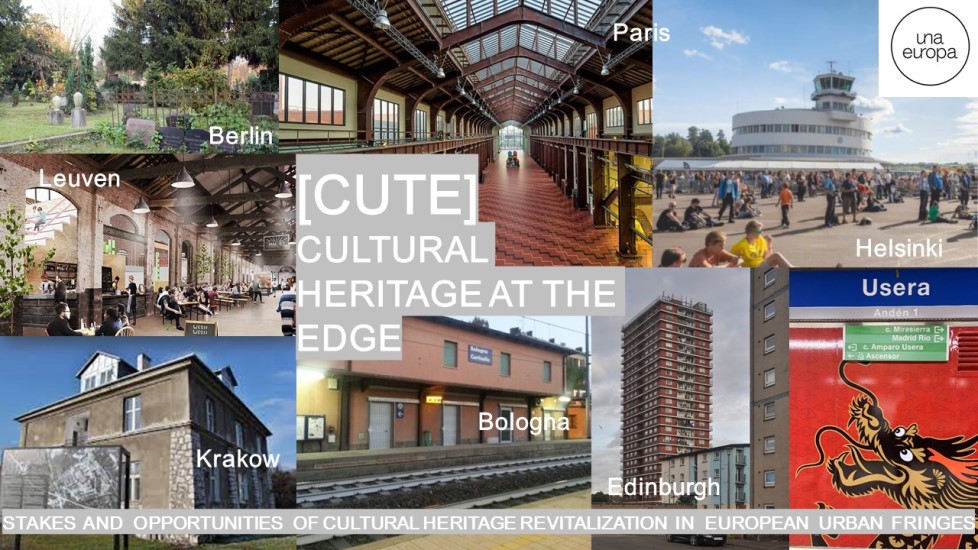
|
|
|
Scientific legitimacy > The renewed heritage geographies of urban fringesMost European cities (including those of the 8 universities of Una Europa) possess major historical assets. Accumulated over centuries, they historically represent the power of political or ecclesiastic elites and have been the center of political attention. However, they also present a striking contrast between, on the one hand, the monumental, highly visible and often overtouristified central urban areas and, on the other hand, the urban fringes, built in 19th and 20th centuries, whose cultural heritage is less well known or understood. Urban fringes incorporate today former medieval villages, industrial areas more or less anarchically built in the 19th century, factory buildings, storage areas and warehouses, transport infrastructure – airports, canals and rails, tenements, social housing, modern and contemporary residential architecture. They offer aggregations of heterogeneous urban forms and styles. They have been the settling ground of newcomer populations arriving from former colonies, from the countryside or from recent immigration, and possess intangible heritages that reflect the social and cultural mix of their inhabitants, built around toponymy, ceremonies or arts and crafts. Urban fringes: metropolization, spatial balance, social reconfiguration and justice These areas – the city’s backyards – are crucial for contemporary metropolization and are attracting a new interest from national, regional and local governments as well as from private investors and from local communities. Urban fringes contribute to new definitions of the regional and metropolitan. They are the theatre of diverse social processes and reconfigurations. These processes involve formal, functional and symbolic changes that include the formulation of new uses of public space, the creation of new landmarks, references or heritage symbols; and they offer the potential for renewed and more inclusive understanding of cultural heritage, transforming the current metropolitan uneven geographies. These evolutions and perspectives (which connect with key themes of the JPICH SRIA – Joint Program Initiative Cultural Heritage, Strategic Research and Innovation Agenda) are particularly important in terms of spatial balance and social justice. Urban fringes represent today new possibilities for the development of residential or professional functions and are often experiencing early stage gentrification phenomena. However, despite the importance of the existing tools in a European level, there are still urban fringes and suburbs that do not capture any economic or cultural benefit. This is due to several reasons and mainly to a “negative spiral” from which these regions and/or urban areas are historically suffering (de-industrialization, desertification, marginalisation, etc.). This spatial imbalance functions as a territorial injustice. Targeted and specific tools and instruments are needed in order to use cultural heritage as a resource not just in the centres of cities, where we expect to find it, but in their peripheries, where its appearance is more unexpected. |
| Online user: 2 | Privacy |

|
